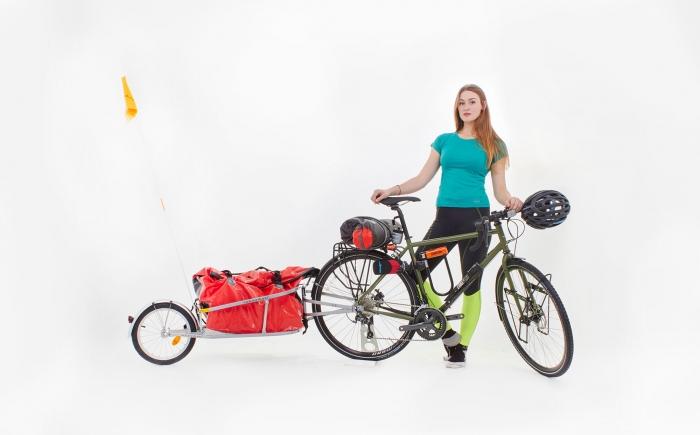I I often take my bike, a Trek Fuel EX9 mountain bike, on my travels to Nepal and the USA where I’ve done many cross-country trips and some biking in adventurous areas, and people frequently ask me about packing a bike to take on a flight. It’s pretty easy, and takes about 20-30 minutes at each end.
Most airlines will take bikes, but the only one I know that takes bikes completely free without even counting them as part of your overall baggage allowance is Virgin Atlantic. For me this means I fly Virgin every time to the USA. Other airlines have different opinions – some less enlightened carriers charge for every kilo, and some allow you to take an extra bike bag but knock 10kg off of your other luggage. for example, Qatar Airways allow you part of the extra for a bike when going to Nepal which is a big help. In any event, check before you fly so you don’t have a nasty surprise at the airport. And note, some Virgin flights are operated by Delta and although they do abide by Virgin’s terms, not all of their staff know about it or are convinced you’re not trying to pull a fast one!
Box or bag?
If you value your bike it may seem obvious that you should use a solid bike box of the type that are available from several manufacturers, with wheels and pretty indestructible. These are pretty pricey, about £200 – but cheap compared to a carbon road bike! However I use a bag with no rigid bits at all. In my experience if you follow the packing rules below bikes don’t get damaged, and the box doesn’t fit in a hire car… It’s also a huge great lump to be lugged around or stored at the other end. Having said that, my logic is that mountain bikes should be tough – they’re going to be thrown around in the desert or the Himalayas after all! I can completely understand that a road bike would need much better protection – and will be lighter in any case, so a heavy box is probably best.
So I use the bag and put the bike on the back seat (using the folded bag as protection for the seat) or in the boot. A regular ‘Full size’ car in US rental locations will take a bike that way, but a box/carrier won’t fit in either way.
Packing
– before starting, children, you’ll need long cable ties (big bag), gaffer tape and some packing like cardboard and a bit of foam
– deflate the tyres – this was recommended for years but airline instructions now say don’t bother – I do anyway, why not? It seems logical…
– take off the handlebars, leave them in place with all the cables and cable tie the bars to the top tube
– take off the rear mech hanger, but leave it in place and use cable ties to hang it on the frame (this is easily the most important bit for avoiding damage in transit)
– remove pedals
– take off the seat
– pad the drive train and any pointy, sticky-out bits – I use gaffer tape and cardboard
– you’ll often be told it is essential to put a spacer in the brakes so when the lever is moved they don’t lock. I do this, but have never really found it a big problem when I haven’t, or the spacer fell out. So don’t panic on this one.

All of this reduces the bike size and is obvious as you go along So of course if using a box you won’t need all the packing steps above.
If this seems like a fuss, it’s nothing compared to getting a damaged bike on arrival and having to visit the local bike shop and wait for a repair! One year I was convinced I couldn’t remove the rear mech and just padded it out – it sticks out most and suffers a lot of leverage and was destroyed on arrival. $150 and two days later….
As for what tools to take, the obvious and the minimum. Multi tool, a tube or two, tyre levers etc. The only large item I take is a light pedal spanner – this is the only thing awkward to replace and although you’ll only use it twice, again it saves a trip to the local bike shop.
If you need a cardboard bike box for your travel, we send loads to the recycling – so we’d be delighted to supply you with one but please call in advance.




